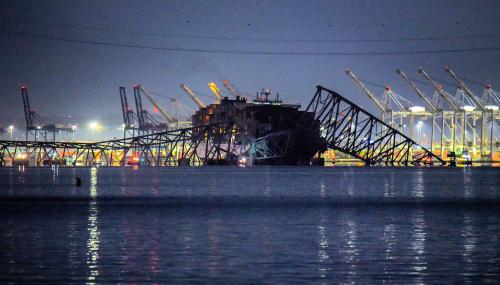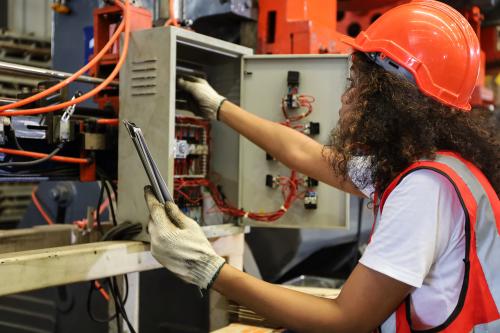America is in the midst of an infrastructure crisis.
No, we’re not referring to the 63,000 bridges that are structurally deficient. Or the estimated 240,000 water main breaks each year. Or the fact that only 43 percent of low income households have access to high-speed broadband.
The real crisis is that we’re fixing these problems the wrong way. People believe the federal government will come to the rescue through a National Infrastructure Bank, or boost spending through an increase in the gas tax.
But the federal government essentially can’t and won’t fix our national infrastructure.
Because of major initiatives such as the New Deal, the Interstate Highway Program, and the recent stimulus package, the federal role in infrastructure is overemphasized. Even in infrastructure sectors like transportation and water, the federal share of total spending historically hovers only around 27 percent. And for other sectors such as freight rail, telecommunications, and clean energy, the federal role in funding and finance is actually quite limited.
This has significant implications for how America designs, finances, and delivers its infrastructure. In the future, true partnerships of government entities, private firms, financiers, and philanthropies outside of Washington will need to do the hard work to get stuff done.
First, for some sectors like transportation, the lion’s share of revenue will need to be raised by traditional public means like taxes or user fees.
Ballot measures, for example, are very popular among voters. According to the Center for Transportation Excellence, 73 percent of transportation measures passed in 2013 as did 79 percent in 2012. Also in 2013, eight states voted to raise taxes to pay for infrastructure projects. This includes both conservative states like Wyoming and democratic controlled legislatures in states like Maryland. States and localities are also experimenting with the sale or lease of air rights to provide revenue for a range of investments, pioneered over Grand Central Station and now in Dallas, Boston, and Arlington, Virginia.
Second, there are other infrastructure classes and projects that are appropriate as public/private partnerships. These arrangements allow the public sector to engage with private enterprises to take an active role in aspects of the lifecycle of an infrastructure asset. There are many ways to do them but, at their heart, they mean the public and private sides share the risks involved in getting projects built, operated and maintained, as well as the rewards such as the revenue the projects generate.
The problem is that there are no standards for transparency, how to share risks between partners, or handle labor relations. Therefore a mix of public, private, and civic groups will have to take the lead.
An emerging example is the West Coast Infrastructure Exchange, a collaborative effort between California, Oregon, Washington, and British Columbia partially supported by the nonprofit Rockefeller Foundation. (Full disclosure, the Rockefeller Foundation also supports the Brookings Institution.) The WCX aims to develop a pipeline of investable projects and develop standards for transparency, contracts, labor, and risk allocation. If successful, the WCX could serve as model for other state, city, and metro-led exchanges throughout the country.
Third, other areas of infrastructure like energy, telecommunications, and real estate will remain dominated by the private sector, typically with federal and state regulatory oversight. But here, too, partnerships are increasingly aligning these investments with critical public policy goals.
For example, as cities like Los Angeles and other markets explore ways to extend broadband access to all homes to take full advantage of modern computing capabilities, they’re also figuring out the financing arrangements and business opportunities for firms interested in developing those networks. Other cities like Detroit and Philadelphia are matching up existing clusters of advanced research universities, medical complexes, and tech and creative firms to spark business expansion as well as residential and commercial growth.
Regardless of the precise arrangement, infrastructure financing is getting more complex. The federal government can and should play a helpful role by relaxing restrictions on tolling, providing low cost loans, and setting policy for national issues like freight movement. But Washington cannot and will not do enough to adequately fund the infrastructure America needs.
America’s infrastructure needs are daunting but not insurmountable. Nor is Washington’s drift and dysfunction an excuse for inaction. Our states, cities and metropolitan areas—and the private, public and civic institutions that lead them—have the talent and creativity to move the county forward in this area as in others. Now is the time to do so.
This commentary is based on an
essay
the authors co-wrote with Marc Lipschultz and Raj Agrawal of KKR & Co. It originally appeared in
Forbes
.


Commentary
Op-edTo Fix America’s Infrastructure, Washington Needs to Get Out of the Way
May 12, 2014